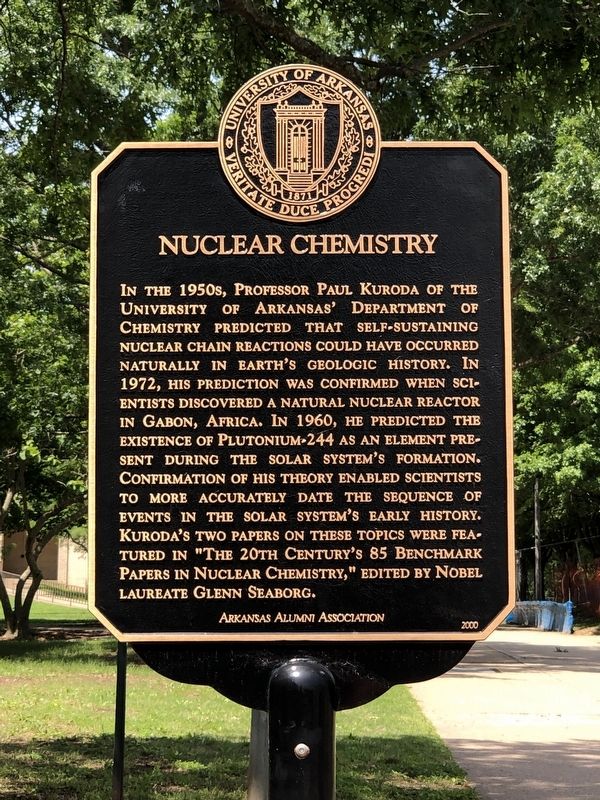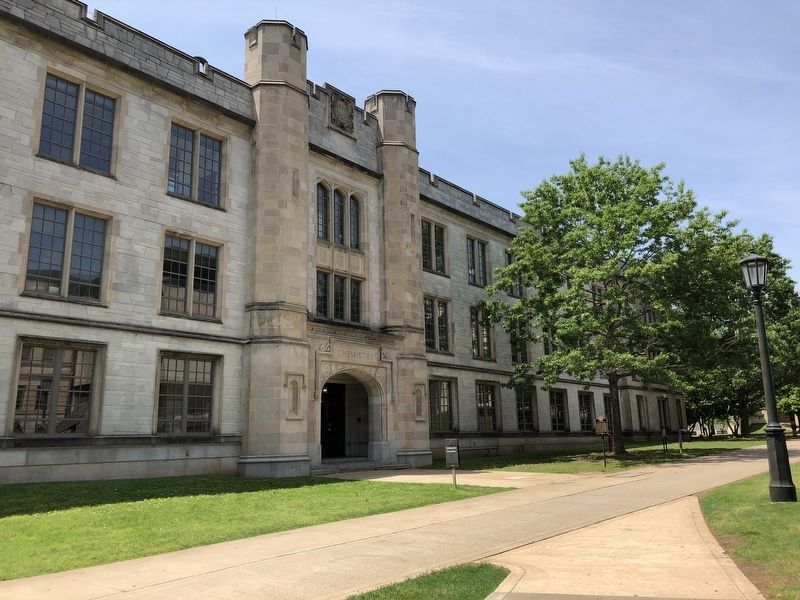Fayetteville in Washington County, Arkansas — The American South (West South Central)
Nuclear Chemistry
Erected 2000 by Arkansas Alumni Association.
Topics. This historical marker is listed in this topic list: Science & Medicine. A significant historical year for this entry is 1960.
Location. 36° 4.086′ N, 94° 10.373′ W. Marker is in Fayetteville, Arkansas, in Washington County. Marker can be reached from North Campus Walk south of West Maple Street, on the right when traveling south. Marker is in front of the Chemistry Building at the University of Arkansas. Touch for map. Marker is at or near this postal address: 345 N Campus Walk, Fayetteville AR 72701, United States of America. Touch for directions.
Other nearby markers. At least 8 other markers are within walking distance of this marker. Gray Hall (within shouting distance of this marker); Buchanan Hall (within shouting distance of this marker); Hill Hall (about 300 feet away, measured in a direct line); Statistical Avian Ecology (about 400 feet away); Chi Omega (about 400 feet away); Phi Alpha Theta (about 400 feet away); Schola Cantorum (about 400 feet away); The Dale Bumpers Legacy (about 400 feet away). Touch for a list and map of all markers in Fayetteville.
Also see . . .
1. Paul Kuroda. Wikipedia entry on the Japanese-American chemist and nuclear scientist. (Submitted on May 25, 2023, by Duane and Tracy Marsteller of Murfreesboro, Tennessee.)
2. Oklo Mine. Wikipedia entry on the Gabonese mine where self-sustaining nuclear fission reactions are thought to have taken place approximately 1.7 billion years ago, lasting for hundreds of thousands of years. (Submitted on May 25, 2023, by Duane and Tracy Marsteller of Murfreesboro, Tennessee.)
Credits. This page was last revised on May 25, 2023. It was originally submitted on May 25, 2023, by Duane and Tracy Marsteller of Murfreesboro, Tennessee. This page has been viewed 70 times since then and 11 times this year. Photos: 1, 2. submitted on May 25, 2023, by Duane and Tracy Marsteller of Murfreesboro, Tennessee.

